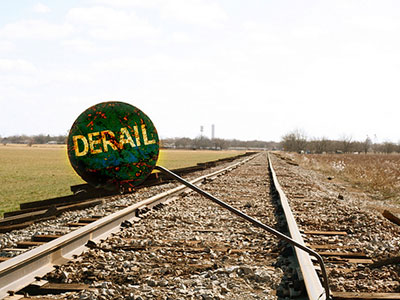The ultimate disaster that can destroy your customer experience is a lack of safety for the customers your serve.
 No matter how nice you are. No matter how polite your customer service team members are. When a customer is injured because of unsafe products, services, or business place, it is nearly impossible to recover from the negative blow your customer experience will take.
No matter how nice you are. No matter how polite your customer service team members are. When a customer is injured because of unsafe products, services, or business place, it is nearly impossible to recover from the negative blow your customer experience will take.
There is no question that safety is imminently more important than customer service. After all, it’s much easier for a business to recover from a negative customer experience because of a failed process or a failure by one of your agents, than it is for that same business to recover from a lawsuit brought on by a customer after slipping and falling in the store because of lax safety standards.
The same thing applies to employees as it does to customers. The last thing a business owner in Oregon or Rhode Island (or anywhere in between) needs is a call from a Portland personal injury attorney or a Providence workers comp attorney. Safety is a part of customer service, because it keeps customers (and employees) from becoming injured, and that keeps the business owner out of court.
Preventing Injuries
Businesses generally spend a lot of time training their staff on the basics of safety: how to properly pick up heavy boxes; walk, don’t run; mark wet floors; etc. There are even more steps that should be taken, however, to ensure that customers who visit the store leave safe and uninjured. Here are just a few tips to help promote a safe shopping experience and workplace environment:
- Outside: Of course, every part of the exterior of the business should have adequate lighting at night. Additionally, all disabled parking spots, curbs, steps, and stairways should be painted a bright color to ensure that arriving and departing customers are aware of all possible hazards.
A sweep of the exterior should be done regularly to remove health and safety hazards, such as shopping carts and abandoned garbage. Just as important, though, is the necessary examination of the property grounds. Any potholes, sidewalk cracks, uneven pavement, exposed tree roots, or other visible hazard needs to be taken care of immediately. A business owner is responsible for anyone slipping and falling on the business property, regardless of whether or not the owner is aware of the hazard that caused the accident.
- Inside: Inside the business, the primary areas of concern should be entrances, exits, eating areas, and bathrooms. All areas that are accessible to employees and/or customers should be checked regularly for potential hazards, most notably, floor spills. Obviously, warning signs should be in place when a floor is being cleaned and until it dries completely. But, when an employee is stocking merchandise, cones or signs should be displayed as well to alert the customers of the activity in the area. This helps prevent injuries to both the employee and the customer.
Internal steps, slopes, and other raised areas should be painted a bright color, just as with the outside. Even though the internal lights will be on and the raised surface should be obvious to the employees and customers, adding a coat of paint to the area will raise awareness even more, and hopefully serve as a reminder for the person to walk more carefully. If paint isn’t an option, post signs at both the top and the bottom of the slope or stairs. That way, even if the person is distracted while walking, the sign will serve as notice of the upcoming hazard.
With just a few additional measures in place, the safety of both the customer and the employee is all but assured. While a business owner can’t foresee every possible scenario, by covering all safety bases (and then some), he will know that he’s done all he can to ensure both a safe employee and customer experience.
Read more: Turning A Customer Service Culture